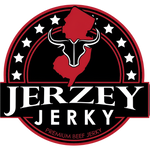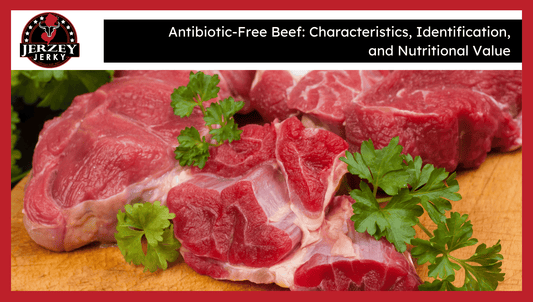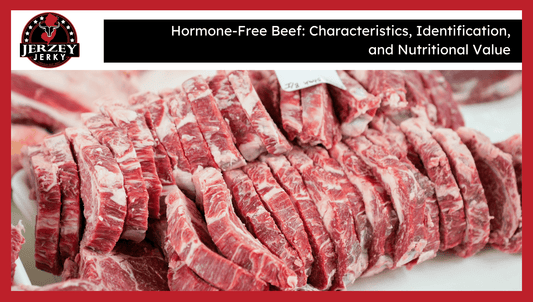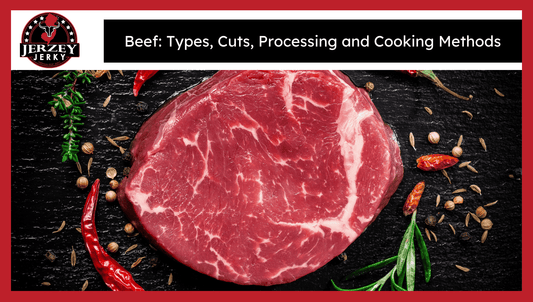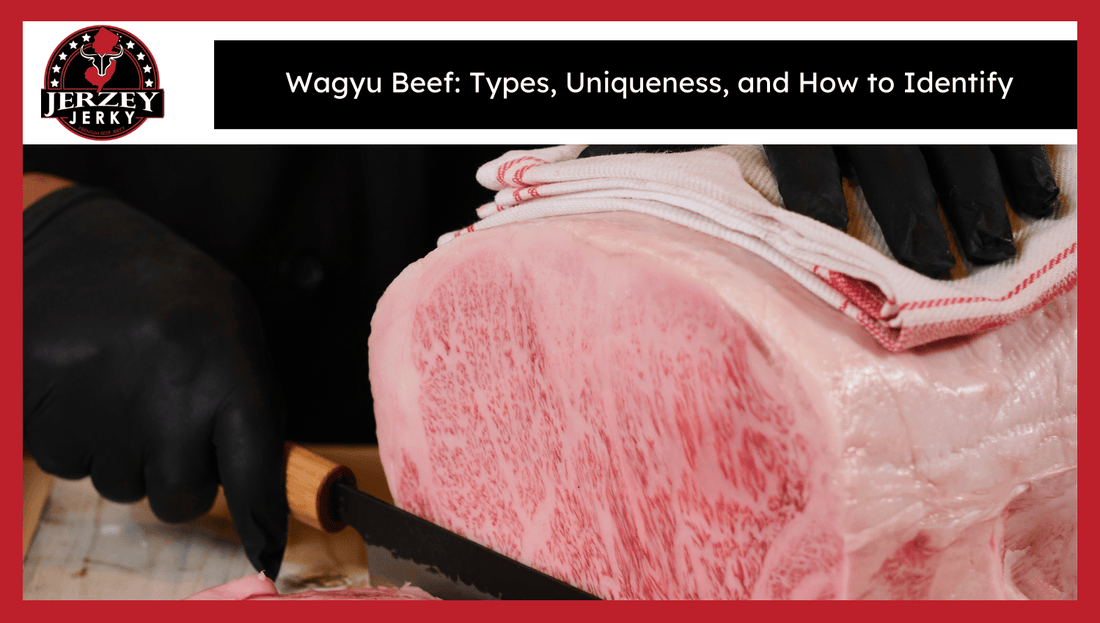
Wagyu Beef: Types, Uniqueness, and How to Identify
Wagyu is a Japanese term meaning Japanese cow, which describes four native breeds: Japanese Black, Japanese Brown, Japanese Shorthorn, and Japanese Polled cow. Japanese Black is the type that comprises 97 percent of the Wagyu beef in Japan.
Wagyu has abundant marbling. It has an 11.1 percent intramuscular fat. Hereford cattle have 5.2 percent. This data is according to a study conducted in 2024 by the University of Queensland, Department of Animal Science and published in BMC Veterinary Research.
Japanese Black fat melts at 22.8 o C. The melting point of Angus fat is 36.4 o C. This makes Wagyu beef feel soft and buttery.
Wagyu fat contains 52 percent oleic acid, which melts at 13.4 °C. Oleic acid enhances self-flavor and tenderness and mouthfeel.
Every animal is identified with a code number. The Japanese government monitors birth, place of birth, and breed. Kobe beef is certified, pure lineage, and BMS score of 6 or better.
What Are the Types of Wagyu Cattle?
Here are the four main types of Wagyu cattle, each with unique traits and flavors.
- Japanese Black (Kuroge Washu): Japanese black constitutes 98% of Japanese Wagyu. It is versatile and gives high marbling of soft texture. This breed produces brands such as Kobe and Matsusaka. It ranks the highest on the Japanese Beef Marbling Standard.
- Japanese Brown (Akage Washu or Red Wagyu): Japanese Brown is 1.3 percent Wagyu. It has less fat content and thus provides lean meat and a mild flavor. The beef is tough, slightly sweet and has more protein than Japanese Black. Grew up primarily in Kumamoto.
- Japanese Shorthorn (Nihon Tankaku Washu): Japanese Shorthorn is 0.6 percent Wagyu. It is less marbled with a more meaty flavor. The beef is higher in amino acids such as glutamate and inosinate, which also makes it savory. It is reared in the Tohoku region.
- Japanese Polled (Mukaku Washu): Japanese Polled constitutes just 0.01 percent of Wagyu. It is exceedingly unusual for localities in Yamaguchi Prefecture. The meat is trim, firm and has lots of umami. It has minimal marbling but very intense beef flavour.
What Makes Wagyu Beef Unique?
Here are four key factors that make Wagyu beef unique in quality and flavor.
- Exceptional Marbling: Wagyu beef has a distinctive web-like fat distributed throughout the muscle. It has approximately 11 percent of intramuscular Fats, which adds tenderness, juiciness, and flavor. This marbling makes Wagyu unique compared to most other beef breeds in the world.
- Genetic Superiority: Selective breeding enhances the quality of Wagyu beef and fat distribution. The Japanese Black cattle have genes that enhance the marbling. This genetic improvement makes meat soft and tender, rich-tasting and uniform between animals.
- High Oleic Content: Wagyu fat makes up about 52 percent of oleic acid, a healthy monounsaturated fat. It also provides balanced omega-3 and omega-6 fatty acids. The composition can enhance the taste, tenderness, and health benefits of other beef.
- Severe Raising Policies: The Wagyu cattle are raised with selective feeding, minimal stress, and mellowed handling. Well-balanced diets composed of grains and low stress conditions decrease muscle toughness. Such techniques improve the tenderness and quality of the finished beef product.
How is Wagyu Beef Graded?
Here are the main grading systems used to evaluate Wagyu beef quality worldwide.
- Japanese Grading System: The Wagyu is graded by the Japan Meat Grading Association (JMGA) which classifies the meat according to the yield and quality. Yields are graded A, B or C, while quality is graded 1-5, based on marbling, color, texture and fat quality of each cut.
- Marbling Score (BMS): The beef marble score (BMS) goes up to 12. The more the score, the fatter the muscle fibers are. Wagyu with a BMS of 8 or over is luxury grade, where the finest tenderness, juiciness and flavour are the valued traits.
- World Grading and US Grading: The US and Australia are grading Wagyu by different systems. They pay attention to marbling, meat color, and texture. Regardless of the grading system in use, premium Wagyu always exhibits extreme levels of marbling and tenderness.
How is Wagyu Used in Cooking?
Here are the main ways Wagyu beef is prepared and served in cooking.
- Popular Cuts: The most common cuts of Wagyu are ribeye, striploin, tenderloin, sirloin, and chuck roll. Wagyu ground is also common. The beef cuts emphasize tenderness and marbling that can be used in different cooking styles.
- Cooking Techniques: Wagyu is best cooked at low and medium heat. Common ways of preparing them are pan-searing, grilling, sous-vide, and teppanyaki. These methods maintain the fine texture of the fat and can bring out more flavor in a meat without overcooking it.
- Serving Styles: Wagyu is used in a variety of dishes: steaks, shabu-shabu hot pots, sukiyaki, burgers, and sushi. Each style highlights variable textures and levels of flavor intensity in terms of rich marbling and buttery tenderness of Wagyu.
- Portion Control: Because the Wagyu is so rich, it is best enjoyed in smaller quantities, approximately 3-4 ounces per person. This quantity creates a delicious taste and tenderness without flooding the palate and overloading fat consumption.
How to Identify Authentic Wagyu Beef?
Here are four clear ways to identify genuine Wagyu beef.
- Breed Certification: Real Wagyu has official certification of the breed. The labels such as A5 or 100% Fullblood Wagyu are evidence of pure Japanese lineage. This makes sure that the beef belongs to known Wagyu cattle whose genetic qualities are authentic.
- Marbling Pattern: The Real Wagyu has thin spider-web marbling. This balanced fat content within muscles sets it apart from other beef. The thin, lacy structure makes Wagyu rich, tender and juicy.
- Country of Origin: Make sure your beef originates. Japanese Wagyu is highly selective, Australian Wagyu and American Wagyu involve crossbreeding to retain a good marbling level. Familiarity with the country assists in checking authenticity and anticipated quality.
- Supplier Verification: Get it from credible sellers/signed Wagyu work and stash it. Reputable suppliers have documentation as evidence of the breed and the grade. This minimises the occurrence of fake or mislabelled Wagyu in the market.
Why is Wagyu Beef So Expensive?
Here are the four main reasons why Wagyu beef is so expensive:
- Limited Supply: Wagyu cattle itself is rare. They take several years of special treatment, such as specific feeding and handling. This reduces the supply of cattle at market, and the prices remain high.
- Labor-Intensive Rearing: Wagyu agriculture includes sensitive feeding, management, and clean conditions as well as genealogy monitoring. These practices make labor and operations more expensive than standard beef production.
- High Demand: Wagyu beef is a popular brand among gourmet chefs and high-end restaurants all over the world. The demand in popular markets remains steady and this keeps the prices up in the world markets.
- Export Regulations: To guarantee the quality of the breed, Japan controls Wagyu exports. These laws restrict their global supply, contributing to their rarity and high prices in the market.
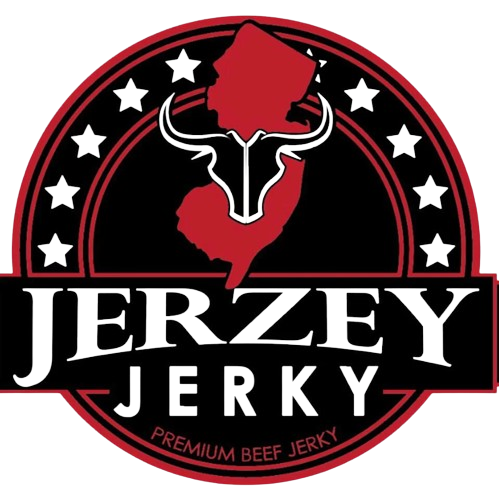
 2025-08-06
2025-08-06
 Wayne Holland
Wayne Holland
